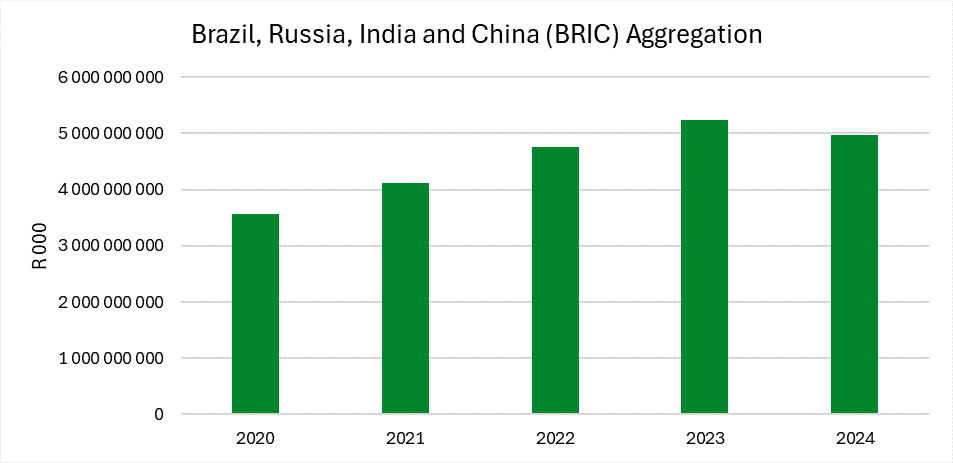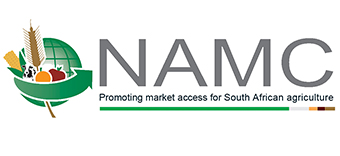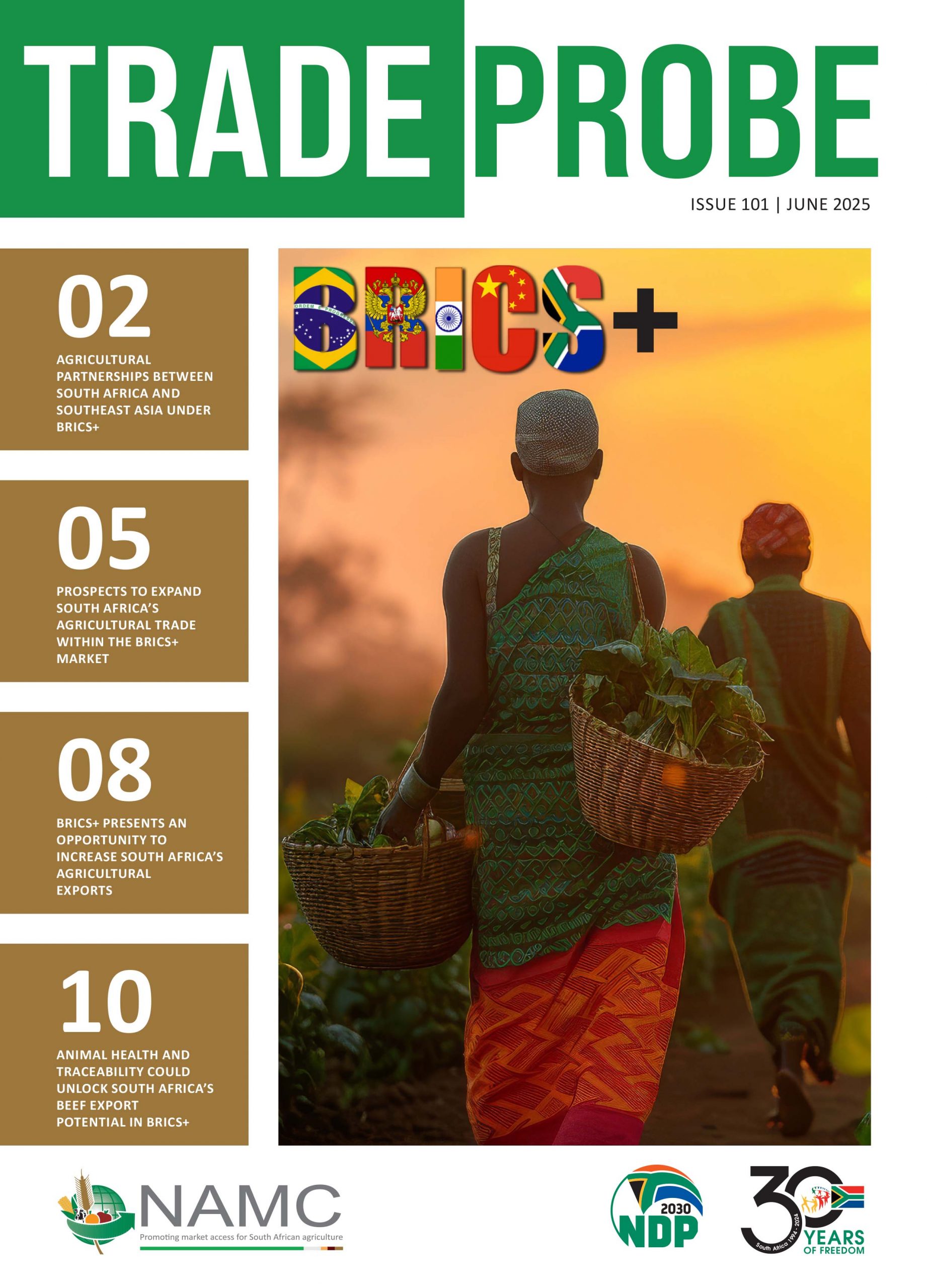BRICS+ PRESENTS AN OPPORTUNITY TO INCREASE SOUTH AFRICA’S AGRICULTURAL EXPORTS
By: Thabile Nkunjana
Introduction
Although BRICS is not a trade bloc, South Africa can strategically promote its trade interests through its economic cooperation arrangement. This grouping is of significance to the agriculture industry, primarily for expanding exports into China and India. Farmers and export companies in South Africa wish to join the large number and value of agricultural products that these countries including new members already import from the global market.
BRIC (Brazil, Russia, India, and China) agricultural imports from the world
Based on trade map data, the BRIC countries agricultural imports amounted to R4.9 trillion in 2024. Between 2020 and 2024, over the past 4 years, BRIC countries agricultural imports averaged R4.5 trillion, increasing by 40% during the same period. Overtime, India’s agricultural imports have increased by 99% while Brazil’s (60%), and China (39%). Russia is the only country that saw a decrease of this grouping in its imports which could be attributed to the economic hardship after the sanctions related to the conflict in Ukraine, decreasing by 13% from R452.9 billion in 2020 to R391.9 billion in 2024 (Trade map, 2025). China imported R3.6 trillion worth of agricultural products in 2024, compared to R702.3 billion, R392.9 billion, and R265.5 billion for Brazil, Russia, and India (as previously mentioned) (Trade map, 2025).
Soybeans, cotton, cattle, maize, fresh cherries, tobacco, wool, grain sorghum, edible pig offal, and wine are among the top imports from China. Sugar, cashew nuts, pigeon beans, almonds, cotton, dry beans, whisky, apples, and soybeans are some of India’s top agricultural imports. Malt, virgin oil, milk, wine, preserved potatoes, soybeans, apples, maize, barley, whisky, garlic, cheese, cattle, pears, and other dairy goods are among Brazil’s top agricultural imports
South Africa currently exports a portion of the aforementioned products to these markets, although this differs throughout these countries due to a number of variables, including higher tariffs. With an average of 8% over the last ten years in total agricultural exports of US$10 billion, BRIC countries make up a very minor portion of South Africa’s agricultural exports as of 2023. With an average of 5% of South Africa’s agricultural exports going to BRICS countries, China is the top market. Wool, citrus, meat, almonds, and grapes were the most popular products. India and Brazil imported very little South African agricultural products, whereas Russia was the second-largest market in the BRICS, with an average of 2%. Top items were citrus, apples, pears, grapes, and wine (Trade map, 2025).

Figure 1: BRIC (Brazil, Russia, India & China) agricultural imports from 2020 and 2024
Source: Trade Map, 2025
South Africa’s top exportable agricultural products
South Africa’s top exportable agricultural products in 2024 were apples ($575.1 million), oranges ($774.0 million), and mandarins ($588.1 million). Maize had an export value of $818.8 million, or R14.9 billion, up 36.8% year over year. Among other noteworthy products, South Africa exports wine, avocados, lemons, wool, and sugar. These are products that the country should explore markets for within the BRICS+ grouping.
Conclusion
Promoting agricultural exports, particularly to China and India, is the primary goal of South African agriculture and agribusiness in the grouping. These are countries with sizable populations and comparatively strong economic growth prospects, which translate into sustainable marketplaces. Due to its location in the southern hemisphere, Brazil frequently competes with South Africa in major agricultural commodities, whereas Russia is a significant producer of wheat and a significant market for South African fruit.
The BRICS+ offers more potential markets because of the recently joined BRICS countries and over the coming years, these new additions on BRICS+ should be South Africa’s targets through bilateral trade agreements. In recent years, a variety of South African agricultural products have found greater market access in Saudi Arabia and Egypt. South Africa should pursue bilateral trade deals with these new BRICS+ members in the upcoming years and the coming BRICS summit in Brazil presents an offer for this.


